Find Help
More Items From Ergsy search
-

Shoulder subacromial shoulder pain
Relevance: 100%
-

Shoulder pain | NHS
Relevance: 52%
-
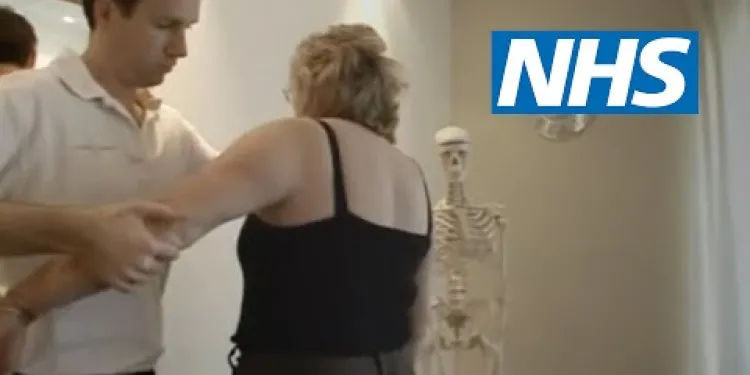
Shoulder pain | NHS
Relevance: 52%
-
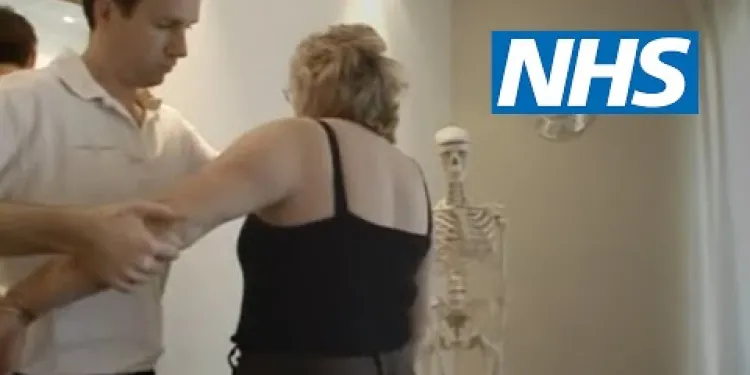
Shoulder pain | NHS
Relevance: 46%
-

Frozen Shoulder Anterior Shoulder Stretch
Relevance: 40%
-

Shoulder Exercises 1
Relevance: 36%
-

Frozen Shoulder Assisted Abduction
Relevance: 35%
-
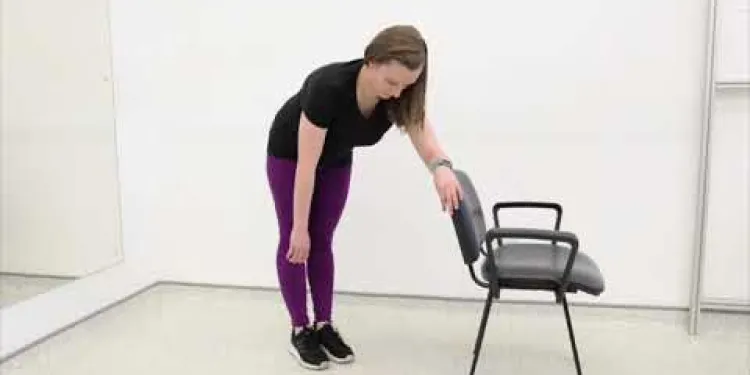
Frozen shoulder Pendular Exercises
Relevance: 35%
-

Frozen Shoulder Scapular Setting
Relevance: 35%
-
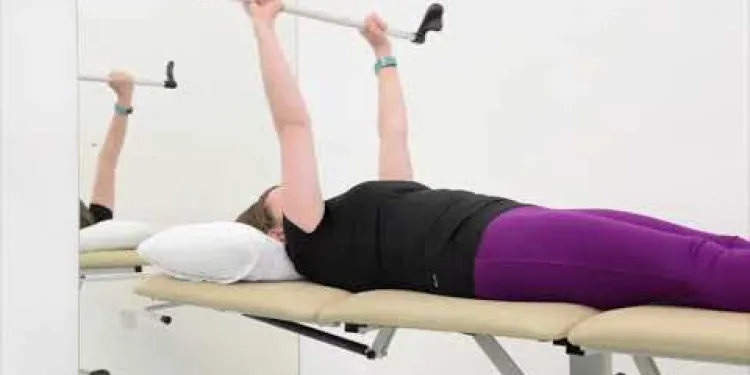
Frozen Shoulder Assisted Flexion
Relevance: 35%
-
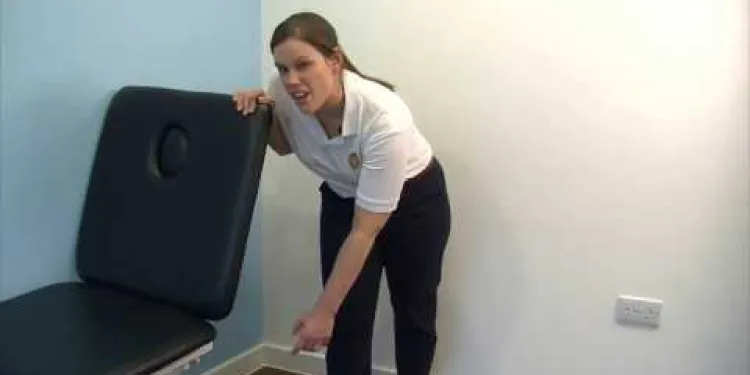
DBTH VFC DISLOCATED SHOULDER
Relevance: 35%
-

Frozen Shoulder Lateral Rotation
Relevance: 35%
-
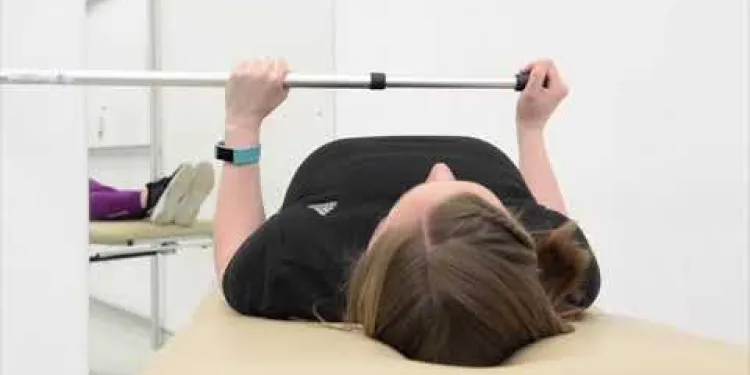
Frozen Shoulder Assisted Lateral Rotation
Relevance: 35%
-

Frozen Shoulder Isometric External Rotation
Relevance: 34%
-

Advice on neck pain and whiplash
Relevance: 25%
-

How do chiropractors treat back pain?
Relevance: 21%
-
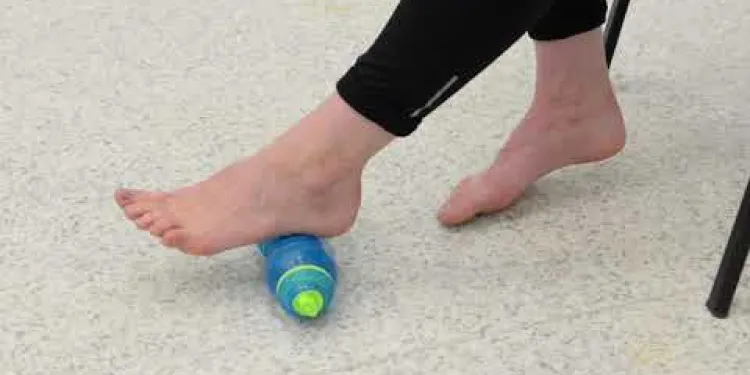
Foot Pain
Relevance: 20%
-

Is impetigo painful?
Relevance: 20%
-

Is a facelift painful?
Relevance: 20%
-

Is a mammogram painful?
Relevance: 19%
-

Heel pain | NHS
Relevance: 19%
-

Pilates for back pain: Seated waist twist | NHS
Relevance: 18%
-

Pilates for back pain: Seated waist twist | NHS
Relevance: 18%
-

Are chiropractic treatments painful?
Relevance: 18%
-

What is the role of pain management in treating whiplash?
Relevance: 18%
-

Mechanical Lower Back Pain
Relevance: 18%
-

Will I feel pain during the procedure?
Relevance: 18%
-

Stomach ache and abdominal pain
Relevance: 18%
-
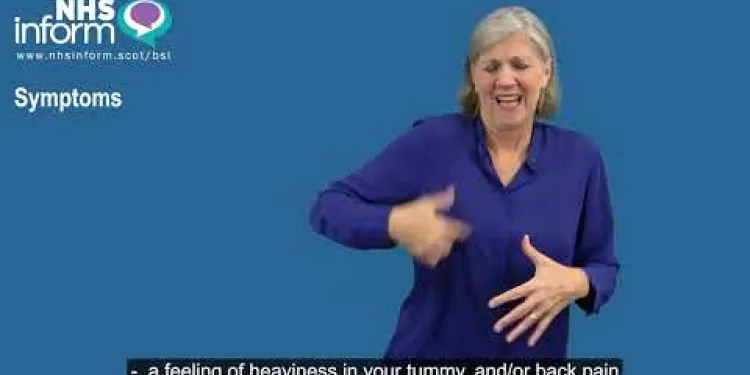
Period pain (dysmenorrhoea) - BSL
Relevance: 18%
-

Is the womb lining test painful?
Relevance: 17%
-

How to treat back pain | NHS
Relevance: 17%
-

How to deal with period pain | NHS
Relevance: 17%
-

Is a womb lining test painful?
Relevance: 17%
-
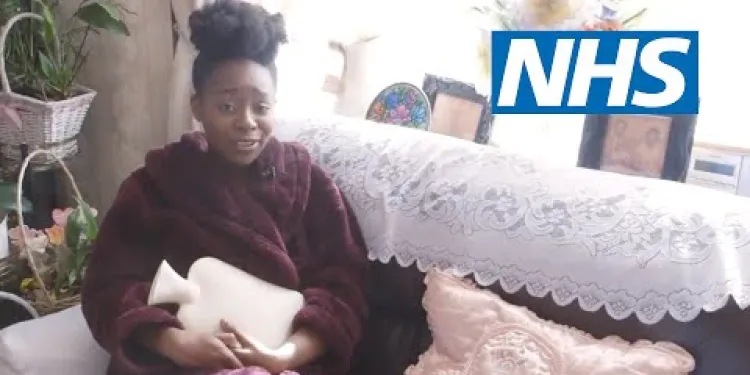
How to deal with period pain | NHS
Relevance: 17%
-

How to deal with period pain | NHS
Relevance: 17%
-

How to deal with period pain | NHS
Relevance: 17%
-

Greater trochanteric pain syndrome
Relevance: 17%
-

Can I use Ibuprofen for menstrual pain?
Relevance: 16%
-

How do NSAIDs work to reduce pain?
Relevance: 16%
-

Pelvic Girdle Pain Advice Class
Relevance: 16%
Understanding Shoulder Subacromial Pain
What is Subacromial Shoulder Pain?
Subacromial shoulder pain, commonly referred to as subacromial impingement syndrome, is a prevalent condition that affects the shoulder joint. This condition arises when the tendons of the rotator cuff and the subacromial bursa become trapped and compressed during shoulder movements. The result is inflammation and pain, which can significantly limit the range of motion and functionality of the shoulder.Causes of Subacromial Shoulder Pain
Several factors can contribute to the development of subacromial shoulder pain. Overuse of the shoulder joint, particularly through repetitive overhead activities, is a leading cause. This condition often affects athletes and individuals whose professions require constant shoulder motion, such as painters or carpenters. Anatomical abnormalities, such as bone spurs or a curved acromion, can also narrow the subacromial space and contribute to impingement.Symptoms to Look For
Individuals experiencing subacromial shoulder pain may notice a variety of symptoms. Commonly, there is a dull ache in the shoulder, which can become sharp during certain movements, especially when lifting the arm. Pain during the night, difficulty sleeping on the affected side, and a reduced range of motion are also typical indicators. Some people might experience weakness in the shoulder, making it challenging to perform daily tasks.Diagnosis and Treatment Options
Diagnosing subacromial shoulder pain typically involves a physical examination, where the clinician assesses the range of motion, tenderness, and strength of the shoulder. Imaging tests, such as X-rays or MRI scans, may be used to rule out other conditions and confirm the diagnosis. Treatment options range from non-invasive to surgical interventions. Initial treatment often includes rest, anti-inflammatory medications, and physical therapy to strengthen the shoulder muscles and improve flexibility. In persistent cases, corticosteroid injections may be administered to reduce inflammation. Surgical options, like arthroscopy, may be considered if conservative treatments fail to provide relief.Preventive Measures
Preventing subacromial shoulder pain involves maintaining a balance between shoulder strength and flexibility. Engaging in regular exercises that target the rotator cuff and shoulder stabilisers can help. It's essential to practice proper techniques during physical activities and avoid repetitive overhead movements when possible. Ergonomic adjustments in the workplace can also reduce the risk of developing this condition.Conclusion
Subacromial shoulder pain can be a debilitating condition, but with proper understanding and management, individuals can achieve significant relief. Early recognition of symptoms, accurate diagnosis, and a combination of therapeutic interventions are crucial in managing this condition effectively. By incorporating preventive measures into daily routines, the risk of developing subacromial impingement syndrome can be minimised, ensuring healthier shoulder function.Understanding Shoulder Subacromial Pain
What is Subacromial Shoulder Pain?
Subacromial shoulder pain happens when the shoulder does not move well. It is when tendons in the shoulder get squeezed and hurt. This can make it hard to move your shoulder without pain.Causes of Subacromial Shoulder Pain
There are many things that can cause this shoulder pain. If you use your shoulder a lot, like painting or playing sports, you might get this pain. Sometimes, bones in the shoulder are shaped differently and can cause the pain too.Symptoms to Look For
If you have this shoulder pain, you might feel a dull ache. Sometimes the ache is sharp when you lift your arm. It can hurt at night or when you lie on it. Your shoulder might feel weak, and it might be hard to do things like lift objects.Diagnosis and Treatment Options
To find out if you have this shoulder pain, a doctor will check your shoulder. You might need an X-ray or MRI scan. Treatment usually starts with resting your shoulder, taking medicine, and exercises to make your shoulder strong. If these do not work, doctors might give you an injection to help with the pain. In some cases, surgery might be needed.Preventive Measures
To stop shoulder pain, you can do exercises that make your shoulder strong and flexible. Make sure you use the right movements when doing physical activities. Try not to move your shoulder over your head too much. Changing how you work can help too.Conclusion
Shoulder pain can make it hard to do things, but you can feel better with the right help. Knowing what causes the pain and how to fix it is important. Doing exercises and being careful can keep your shoulders healthy.Frequently Asked Questions
What is shoulder subacromial pain?
Shoulder subacromial pain, also known as subacromial impingement, is a common condition where the tendons of the shoulder become compressed or irritated, leading to pain and restricted movement.
What are the main symptoms of shoulder subacromial pain?
The main symptoms include pain when lifting the arm, pain at night, and discomfort when lying on the affected shoulder. You may also experience weakness and reduced range of motion.
What causes shoulder subacromial pain?
Causes can include repetitive overhead activities, poor posture, aging, and degeneration of shoulder tissues. It may also be due to anatomical variations or previous shoulder injuries.
How is shoulder subacromial pain diagnosed?
A diagnosis is typically made based on the patient's medical history, a physical examination, and imaging tests such as X-rays, ultrasound, or MRI to rule out other conditions.
What are the treatment options for shoulder subacromial pain?
Treatment options include rest, physical therapy, pain relief medications, steroid injections, and in some cases, surgery to relieve the impingement.
Can shoulder subacromial pain be prevented?
Prevention strategies include maintaining good posture, avoiding repetitive overhead activities, performing shoulder strengthening exercises, and ensuring proper techniques during physical activities.
How effective is physical therapy for shoulder subacromial pain?
Physical therapy is often very effective in treating shoulder subacromial pain. It can help strengthen shoulder muscles, improve flexibility, and reduce pain through targeted exercises and manual therapy.
Are there any lifestyle changes that can help manage shoulder subacromial pain?
Yes, lifestyle changes such as modifying activities to avoid overuse, maintaining a healthy weight, and engaging in regular exercise to keep shoulder muscles strong can help manage the condition.
When should I see a doctor for shoulder subacromial pain?
You should see a doctor if you experience severe pain, persistent symptoms that do not improve with rest, or if you have difficulty performing everyday activities due to shoulder pain.
Is surgery always necessary for shoulder subacromial pain?
No, surgery is not always necessary. Many people find relief through conservative treatments such as physical therapy, medications, and lifestyle changes. Surgery is usually considered if these methods are not effective.
What types of surgeries are performed for shoulder subacromial pain?
Surgical options can include arthroscopic surgery to remove inflamed tissue, bone spurs, or repair torn tendons. In some cases, open surgery may be required.
How long does recovery take after surgery for shoulder subacromial pain?
Recovery time varies, but it typically takes several months. Physical therapy is often required post-surgery to regain strength and mobility. Full recovery might take up to a year.
Can I continue working with shoulder subacromial pain?
It depends on the severity of the pain and the type of work you do. Light duties or modified tasks may be necessary to avoid aggravating the condition. Consult with your doctor for personalised advice.
Will shoulder subacromial pain go away on its own?
In some cases, mild shoulder subacromial pain may improve with rest and self-care measures. However, persistent or severe cases typically require medical intervention for long-term relief.
Are there any risks associated with untreated shoulder subacromial pain?
Yes, untreated shoulder subacromial pain can lead to chronic pain, decreased shoulder function, and potentially more severe shoulder problems. Early diagnosis and treatment are important to prevent complications.
What is shoulder pain under the top bone?
Shoulder pain under the top bone means your shoulder hurts. This happens near the top bone in your shoulder.
If it hurts, you can:
- Rest your shoulder.
- Use an ice pack to help.
- Ask a grown-up or a doctor for help.
Shoulder pain under the bone at the top, called subacromial pain, happens when parts inside your shoulder get squeezed or hurt. This causes pain and makes it hard to move your shoulder.
Helpful tools: Try using a heat pack on your shoulder to feel better. Exercises like gentle arm circles can also help. You might want to talk to a doctor or a physiotherapist for more advice.
What are the main signs of pain in the shoulder?
Here are some signs if your shoulder hurts:
- It hurts to lift your arm.
- Your shoulder might feel weak.
- It can be hard to reach for things.
- Your shoulder might hurt when you rest.
Tools that can help:
- Ask someone to explain hard words.
- Use pictures to help you understand.
- Try to say the words out loud.
The main signs are feeling pain when you lift your arm, having pain at night, and feeling uncomfortable when you lie on the sore shoulder. You might also feel weak and have trouble moving your arm fully.
Why does my shoulder hurt under the acromion?
Shoulder pain under the acromion can happen for lots of reasons. Here are some:
- Overuse: Using your shoulder too much can make it sore.
- Injury: Hurting your shoulder can cause pain.
- Tight Muscles: If the muscles are too tight, they might hurt.
- Inflammation: Sometimes the body part can get swollen and hurt.
Tools to help:
- Take breaks if your shoulder feels tired.
- Use ice on your shoulder if it is swollen.
- Talk to a doctor if the pain doesn't go away.
Shoulder problems can happen if you do the same arm movements a lot, like throwing a ball. Bad posture can hurt your shoulders too. Getting older can also make your shoulders hurt because they get worn out. Some people have different shoulder shapes that can cause pain. If you hurt your shoulder before, it might cause problems again.
If you find it hard to read this, you can ask someone to help you. Reading apps or using audiobooks can be helpful too.
How do doctors find out if you have shoulder subacromial pain?
Doctors look at your shoulder and ask you how it feels.
They may ask you to move your shoulder in different ways.
The doctor might do some tests to check your shoulder.
If you're not sure about the words or feel worried, you can ask someone to help, like a friend or family member.
You can also use tools like picture cards to understand better.
Doctors find out what is wrong by looking at a person’s past health problems, checking their body, and using pictures taken by machines like X-rays, ultrasound, or MRI. These tests help make sure it is not something else.
How can we help shoulder pain under the bone?
Here are some ways to help shoulder pain under the bone:
- Rest: Give your shoulder a break. Don't use it too much.
- Ice: Put ice on your shoulder. This can help with pain and swelling.
- Exercise: Do gentle exercises to make your shoulder strong.
- Medicine: Some medicines can help with pain. Ask a doctor.
- Physiotherapy: Visit a person who can help you move better.
- Talk to a Doctor: A doctor can tell you the best way to help your shoulder.
Tools that can help:
- Use a pill reminder to take medicine on time.
- Exercise apps can show you safe exercises.
- A sling or support can keep your shoulder safe while it heals.
Remember, it is important to talk to a doctor about your shoulder pain.
To make your shoulder feel better, you can try: resting, doing special exercises with a therapist, taking medicine for pain, getting a small shot that helps, and sometimes having an operation.
Can we stop shoulder pain from happening?
Yes, we can do things to help stop shoulder pain. Here are some easy tips:
- Move your shoulders gently every day.
- Lift things the right way, using your arms and legs.
- Take breaks if you do the same movement all the time.
- Use a soft pad or cushion when carrying heavy bags.
If your shoulder hurts often, talk to a doctor. They can help you keep your shoulder healthy.
To stop shoulder problems:
- Sit and stand up straight.
- Do not lift things over your head too much.
- Do exercises to make your shoulders strong.
- Use the right way to move in sports and other activities.
These steps can help keep your shoulders healthy!
Does physical therapy help with shoulder pain?
Physical therapy can help make shoulder pain better. It includes exercises and movements that can make the shoulder stronger and less sore. People often feel better after doing these exercises.
If you have shoulder pain, it is good to see a physical therapist. They can show you exercises to help.
Physical therapy can help with shoulder pain. It makes shoulder muscles stronger, helps you move better, and makes the pain go away. This is done with special exercises and gentle treatments.
Can changes in my daily life help with shoulder pain?
Yes, changing some things you do every day can help if your shoulder hurts. Here are some things that might help:
- Rest: Give your shoulder a break. Don't use it too much.
- Ice: Put a cold pack on your shoulder to help with pain.
- Exercise: Gentle exercises can make your shoulder stronger. Ask a doctor or a physiotherapist for the right exercises.
- Sit and Stand: Sit or stand up straight. It helps your shoulder feel better.
If you need help remembering to do these things, you can use reminders on your phone or write notes for yourself.
Yes, changing how you live can help. Do not do too much with your shoulder. Stay a healthy weight. Exercise regularly to keep your shoulder muscles strong. These can make the condition better.
When should I go to the doctor for shoulder pain?
Is your shoulder hurting under the top bone? It might be subacromial pain.
You should see a doctor if:
- The pain is really bad.
- The pain does not go away after a few days.
- You have trouble moving your arm.
- Your shoulder feels weak.
Here are some things that can help:
- Ask someone to help you make an appointment.
- Write down how your shoulder feels each day.
- Tell the doctor about your shoulder pain.
See a doctor if your shoulder really hurts, if it doesn't get better with rest, or if it's hard to do things because your shoulder is sore.
Here are some tips to help you:
- Use a warm cloth or ice pack on your shoulder.
- Ask for help from family or friends.
- Try simple shoulder exercises.
Do you always need surgery for shoulder pain?
No, you don't always need surgery. Many people feel better with other treatments like exercise, medicine, and changing some daily habits. Doctors usually think about surgery if these other ways don't help.
What kinds of surgeries help shoulder pain?
There are surgeries to help with shoulder pain. Doctors can do these if your shoulder hurts under the bone called 'acromion'. It is like a roof for your shoulder. Surgery can help make the pain go away.
Tools that might help you:
- Pictures: Seeing pictures or drawings of the shoulder can help you understand better.
- Videos: Watching a video shows what happens during shoulder surgery.
- Talking to Someone: Speaking with a doctor or nurse can help you know more about the surgery.
You might need an operation to help your shoulder feel better. Doctors can use a tiny camera to look inside your shoulder and fix it. They can take out any sore tissue or smooth out bumpy bones. Sometimes, they need to do a bigger operation.
How long does it take to feel better after shoulder surgery?
Getting better can take a long time, sometimes many months. After surgery, you often need special exercises called physical therapy to get your strength and move well again. It might take up to a year to feel fully better.
Can I keep working if my shoulder hurts?
How bad is your pain? What kind of work do you do? You might need to do lighter work so you don't hurt yourself more. Ask your doctor what is best for you.
Will shoulder pain get better by itself?
Sometimes shoulder pain can go away on its own. But it's a good idea to see a doctor if:
- The pain doesn't get better.
- It's hard to move your shoulder.
- Your shoulder is swollen or red.
Using an ice pack, resting your shoulder, and doing gentle exercises can help. A doctor or physiotherapist can give you advice on what to do next.
Sometimes, a sore shoulder can feel better if you rest and take care of it yourself. But if it hurts a lot or for a long time, you might need help from a doctor to make it feel better.
Can it be bad if shoulder pain is not treated?
If you do not treat shoulder pain, it can turn into pain that lasts a long time. Your shoulder might not work as well, and you could have bigger shoulder problems. It is important to see a doctor early so you can get help and stop more problems from happening.
Here are some things that can help you understand:
- Talk to a doctor if you have shoulder pain.
- Use pictures or drawings to understand how the shoulder works.
- Ask someone to read this to you if it is hard to read.
- Break the information into small pieces to make it easier to understand.
Useful Links
- Ergsy carfully checks the information in the videos we provide here.
- Videos shown by Youtube after a video has completed, have NOT been reviewed by ERGSY.
- To view, click the arrow in centre of video.
- Most of the videos you find here will have subtitles and/or closed captions available.
- You may need to turn these on, and choose your preferred language.
- Go to the video you'd like to watch.
- If closed captions (CC) are available, settings will be visible on the bottom right of the video player.
- To turn on Captions, click settings .
- To turn off Captions, click settings again.
More Items From Ergsy search
-

Shoulder subacromial shoulder pain
Relevance: 100%
-

Shoulder pain | NHS
Relevance: 52%
-

Shoulder pain | NHS
Relevance: 52%
-

Shoulder pain | NHS
Relevance: 46%
-

Frozen Shoulder Anterior Shoulder Stretch
Relevance: 40%
-

Shoulder Exercises 1
Relevance: 36%
-

Frozen Shoulder Assisted Abduction
Relevance: 35%
-

Frozen shoulder Pendular Exercises
Relevance: 35%
-

Frozen Shoulder Scapular Setting
Relevance: 35%
-

Frozen Shoulder Assisted Flexion
Relevance: 35%
-

DBTH VFC DISLOCATED SHOULDER
Relevance: 35%
-

Frozen Shoulder Lateral Rotation
Relevance: 35%
-

Frozen Shoulder Assisted Lateral Rotation
Relevance: 35%
-

Frozen Shoulder Isometric External Rotation
Relevance: 34%
-

Advice on neck pain and whiplash
Relevance: 25%
-

How do chiropractors treat back pain?
Relevance: 21%
-

Foot Pain
Relevance: 20%
-

Is impetigo painful?
Relevance: 20%
-

Is a facelift painful?
Relevance: 20%
-

Is a mammogram painful?
Relevance: 19%
-

Heel pain | NHS
Relevance: 19%
-

Pilates for back pain: Seated waist twist | NHS
Relevance: 18%
-

Pilates for back pain: Seated waist twist | NHS
Relevance: 18%
-

Are chiropractic treatments painful?
Relevance: 18%
-

What is the role of pain management in treating whiplash?
Relevance: 18%
-

Mechanical Lower Back Pain
Relevance: 18%
-

Will I feel pain during the procedure?
Relevance: 18%
-

Stomach ache and abdominal pain
Relevance: 18%
-

Period pain (dysmenorrhoea) - BSL
Relevance: 18%
-

Is the womb lining test painful?
Relevance: 17%
-

How to treat back pain | NHS
Relevance: 17%
-

How to deal with period pain | NHS
Relevance: 17%
-

Is a womb lining test painful?
Relevance: 17%
-

How to deal with period pain | NHS
Relevance: 17%
-

How to deal with period pain | NHS
Relevance: 17%
-

How to deal with period pain | NHS
Relevance: 17%
-

Greater trochanteric pain syndrome
Relevance: 17%
-

Can I use Ibuprofen for menstrual pain?
Relevance: 16%
-

How do NSAIDs work to reduce pain?
Relevance: 16%
-

Pelvic Girdle Pain Advice Class
Relevance: 16%


